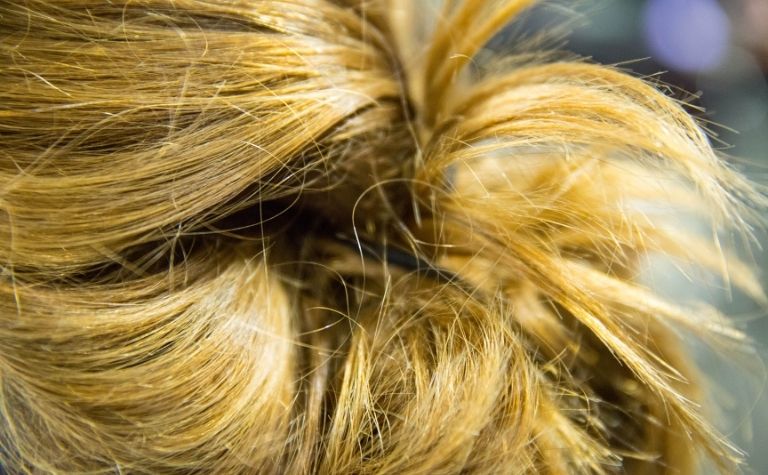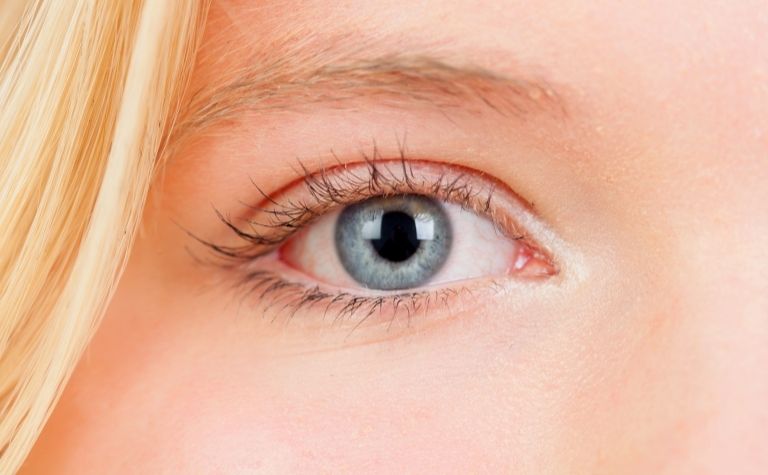Most people’s picture of a typical Scandinavian includes pale skin, blonde hair, and blue eyes. While there is some truth to these stereotypes, they do not describe minorities like the Sami.
Even among white Scandinavians, other common traits receive less attention.
Scandinavians have thin hair because of a low prevalence of the ectodysplasin A receptor (EDAR) gene among the Scandinavian population.
More commonly found in Asian people, the EDAR gene influences variations in hair thickness across different human populations.
This article will explore the genetic determinants of hair thickness that explain the thinness of Scandinavian hair.
It will also describe other common Nordic features and consider what factors might have caused them.
Also, see Why Are Scandinavians So Rich? to learn more.

Genetic Determinants of Hair Thickness
Hair thickness does not refer to hair growth – i.e., to the quantity of hair (or the lack of it). Instead, it indexes the thickness of the average strand of hair.
So when geneticists speak of variations in hair thickness, they refer to the diameter of individual strands of hair.
Notably, as individuals age, their hair also tends to get thinner.
With those caveats in place, it is still reasonably accurate to state that the hair of a typical white Scandinavian person is, on average, likely to be thinner than that of a typical Asian person.
Among other things, it is also more susceptible to UV radiation. [1]
The current scientific consensus for the thinness of Scandinavian hair traces it to a low incidence among Scandinavian populations of the EDAR gene.
This genetic variation – traced to population movements 30,000 years ago – is responsible for producing the proteins required to make human hair grow thicker.
More specifically, genetic studies have established a link between a single nucleotide polymorphism (SNP) known as EDAR 1540T/C with hair thickness.
This SNP is much more common among Native American and East Asian populations than among European or African people, accounting for significant variations in hair thickness. [2]
According to Ancestry.com, “More than 90% of Han Chinese, 70% of Japanese and Thai people, and 60% to 90% of Native Americans carry the “thick hair” version of the gene.
Meanwhile, it’s almost nonexistent in people of African and European descent.” [3]
Genetically, hair morphology is also an additive trait – meaning genetic material from both parents will account for genetic variations in the DNA of their offspring.
So children of two parents with thick hair are likely to have thicker hair than those of parents among whom only one has thick hair.
With a relatively more isolated population, Scandinavian hair is likely to have gotten thinner over the centuries.
However, it is essential to note that Scandinavian populations are not entirely homogeneous. Many Europeans will have hair as thin as Scandinavians.
At the same time, Sami and other Eastern Nordic people like the Finns may have thicker hair than the average white Scandinavian. [4]
Also, see Why Do Scandinavians Have Small Noses? to learn more.

Characteristic Scandinavian Facial Features
Typical Scandinavian facial features include:
- Pale skin
- Blonde hair
- Blue eyes
- Broad foreheads
- Straight, narrow noses
- Small cheeks without prominent cheekbones
- Pointed chins
It turns out a vast majority of Scandinavians really do have blue eyes, blonde hair, and light skin.
As per recent studies, 78% of Swedes, 59.6% of Danes, and 55% of Norwegians are blue-eyed. [5]
Similarly, Scandinavians have a high incidence of blonde hair, light skin, and many other features stereotypically associated with Nordic people.
However, many Scandinavians also have brown, green, or gray eyes, brown or black hair, and other features not usually attributed to Scandinavians.
For instance, Finns or Sami people can be more distinct from other Scandinavians than the typical white Scandinavian is from other northern European peoples.
So, as with all stereotypes, the standard representation of Scandinavians can conceal as much as it reveals.
Moreover, because these tropes overlap simplistically with national boundaries of relatively recent origin, they have been used to incite violent nationalistic fantasies, war, and even genocide.
As an antidote, it is worth considering the factors that influence regional genetic histories within delineated geographies over thousands of years. For instance, consider the variation in Scandinavian eye colors.
Notably, the first hunter-gatherers – who migrated into the Scandinavian peninsula from the south 14,000 years ago – were predominantly blue-eyed.
These people were later joined by other groups from the east, who were primarily dark-eyed. Over thousands of years of genetic exchange, the two populations spawned the diversity of eye colors seen in the region today.
Later, farmers from Anatolia and Syria (who arrived roughly 6000 years ago), herders from the Russian steppes (who reached Scandinavia 5,000 years ago), and East Asian migrants arriving today further enriched this diversity.
Seen in this light, the differences in eye color among Scandinavians are not unusual.
Such complex migratory patterns explain why the population of Scandinavian countries today is only about 65-80% Scandinavian in DNA.
More generally speaking, there are very few “pure” racial populations anywhere in the world.
Also, see How Are Scandinavians Viewed In Europe? to learn more.

Why Do Scandinavians Have Blonde Hair?
Many Scandinavians have blonde hair because of a genetic variation unique to the groups that migrated into the region and thousands of years of relative geographic isolation and intermarriage.
In parts of Sweden, Norway, and Finland, almost 80% of the population is blonde.
Inevitably, there has been much speculation about the high incidence of blonde hair among Nordic people.
Explanations such as the low availability of sunlight in the far north are hard to reconcile with evidence of other dark-haired arctic populations, making the only credible narrative complex and unappealing to those looking for simple answers.
One of the earliest groups that migrated into Scandinavia must have carried with them a genetic mutation that made human hair blonde.
This group must have become relatively well-established in the region, holding its own against other groups or actively displacing them.
Additionally, for various reasons, over thousands of years, Scandinavian men would have preferred blonde-haired women as mates.
Their preference for blondes may have been further emphasized by isolation in the far north, leading to limited exchange of genetic material with other population groups.
A trading hub in the ancient world is unlikely to have had such a genetically similar population, for instance.
Over thousands of years, these factors added up to make the Scandinavian population more blonde.
Conclusion
Many Scandinavians have thin hair because one or both of their parents do not carry the EDAR gene associated with thick hair.
Also, see Why Do Scandinavians Have Colorful Houses? to learn more.
References:
[1] Source
[2] Source
[3] Source
[4] Source
[5] Source
